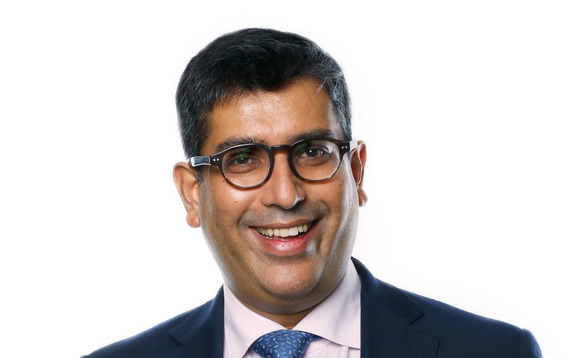
Q&A: Gulf Capital's Richard Dallas & Shantanu Mukerji

Richard Dallas, a senior managing director at Gulf Capital, and newly appointed Asia head Shantanu Mukerji on using Singapore as a regional hub, cross-border expansion, and why a dedicated regional fund is unlikely
Q: What's behind the timing of the Singapore office opening?
Richard Dallas: We've been thinking about Singapore, as an additional location, for at least 3-4 years. We've completed several portfolio-level transactions in Asia, either selling to Asian entities or expanding into the region, organically and inorganically. One of the hallmarks of Gulf Capital is that when we invest in a company we want to take it abroad, so that we internationalize its operations and remove single-country risk. At present, approximately 50% of the revenues across our portfolio come from outside the GCC [Gulf Cooperation Council region]. We wanted to institutionalize our presence in Asia by getting ourselves on the ground there, so we recruited Shantanu, who I've been talking to for a couple of years now. We now have a first-class investment professional in Singapore to build out that local presence.
Q: Was it a choice between Hong Kong and Singapore?
RD: We haven't looked at Hong Kong or any other locations in the region. Part of our Fund IV mandate is focusing on driving cross border growth in Southeast Asia, although we will not necessarily rule out compelling deals in China or anywhere else in Asia if within our thematic mandate. To meet these purposes, there's no better place for a regional headquarters than Singapore. We've been in China before with one of our portfolio companies, and we looked at taking it public in Hong Kong. But the Hong Kong market really requires a North Asian story, in our view. We are focused on Southeast Asia.
Q: What is Gulf Capital's strategic positioning in Asia?
Shantanu Mukerji (pictured): We are unique in that we have expertise in the GCC and in MENA [Middle East and North Africa], which is similar to Southeast Asia in terms of population and GDP. Both regions are increasingly digitally connected, are seeing traditional geographical barriers broken down by technology-enabled business models, and are home to many SMEs [small and medium-sized enterprises] that struggle to access appropriate finance. We can help MENA companies engage in M&A, create revenue streams, and secure exits in Asia, and the other way around.
Q: Which sectors are you thinking about?
SM: We invest in five categories: financial technology, healthcare, business services, consumer, and consumer technology. We are also looking at sustainability as a new and promising vertical. I would describe fintech and consumer as our bread-and-butter sectors in Southeast Asia. They are not only large but also increasingly interrelated – consumer businesses are trying to integrate payments, and payment businesses are trying to integrate with consumption. As an example metaverse and crypto demonstrate the connection of fintech and consumer as commerce has started shifting there.
Q: How has the sector focus evolved over the years?
RD: In Fund II, we did several oil and gas or carbon fuel-type investments. We also looked at construction and property development and food and beverage at the retail level. Before we launch a new fund, we think about megatrends and where there are likely to be industry tailwinds that help drive returns. On that basis, we've left behind several verticals in which we've found success in the past. For example, those petroleum-related and construction and heavy asset-related investments from Fund II are no longer part of our strategy because the world has changed.
Q: Will there be a dedicated Asia fund?
RD: We closed the third fund at USD 750m in 2015. Fund IV launched in the first quarter of this year, and it will have an Asian component. But I don't think we will do a dedicated Asia fund. What makes us differentiated is how we tap into cross-border interaction between Southeast Asia and MENA.
Q: How is that cross-border opportunity set developing?
SM: Private equity investment in Southeast Asia in the first half of 2021 was almost equal to the whole of 2020, and four-fifths went into technology. Go back more than 5-10 years and the landscape was very different. The focus was on state-owned resources and infrastructure; there was very little consumer, there was no concept of fintech. Since then, we have seen technology gain traction in China and maybe India as well, and now it is aggregating Southeast Asia into one giant region. With the impact of the pandemic as well, technology-enabled businesses have come alive in healthcare, financial services, sustainability, and business services. Advances in technology have also dramatically reduced the geographical restrictions imposed by borders, and this uniformity that creates the impetus for going from MENA to Asia.
RD: We want to facilitate movement in both directions. To date, it has mostly been from MENA to Asia, but we think there are opportunities to go from Asia to MENA as well.
Q: With the cross-border expansion, how do you address the need for localisation and the challenges posed by different regulatory regimes?
SM: There is enormous competition in technical businesses in Southeast Asia, but at the same time, we see increased differentiation. Within fintech alone, there are digital banks, SME lenders, and buy now, pay later platforms. Once we add our ability to take them into new geographies combined with our sector expertise and domain knowledge they can scale quickly.
RD: We spend a lot of time thinking about known unknowns and what we can't control, and we have contingency plans in case regulations change in a way that's materially adverse. Given our history of investing in MENA, we are no stranger to regulatory change, and we have demonstrated our ability to adapt. We are well-equipped to do the same in Asia.
Q: What is your approach to value creation beyond cross-border expansion?
RD: Almost 80% of our investments involve control. We have operating partners who work alongside investment partners and develop 3-5-year plans on how to add value above ordinary organic market growth. We're putting together an advisory panel for our Asian operation that will mirror what we do for MENA.
Q: Do you see a difference in valuations between MENA and Asia?
SM: There is a difference right now, but over time, valuations will harmonize. We've been very discerning on valuations. It's important to look not only at present valuations, but also at how they will develop over time. For any private equity firm in our space, the biggest hedge is the quality of the business and the management team, followed by the ability to influence strategy and operations. It's rare to get in below market price. You want to be able to say that the valuation is hedged because of the business and management quality and the ability to influence it.
Q: Valuations generally have been creeping up across most markets…
SM: That's true – when you look at valuations in the context of global monetary policy and capital markets. We would hope that movements in the capital markets will create more activity at reasonable valuations in the private markets space, but it remains to be seen. In Southeast Asia specifically, we have seen valuations rise exponentially in the last few years, which is exactly what happened in China. But we are confident that, as the story progresses, they will begin to rationalize at some point. We will be pragmatic in our approach. On a general level, we keep a close eye on capital markets, monetary policy, inflation, and supply chains, and think about how those will impact industries and companies.
Q: Will there be specific geographic allocations within Asia?
SM: Borders are becoming less relevant, and this is reflected in deal activity. Singapore towers over the rest of Southeast Asia, but that's not because more businesses are in Singapore. Rather, it's because capital flows are less restricted. And scaling is easier than in the past because companies are only held back by regulations that govern business models across different jurisdictions but not geography or brick and mortar barriers. If you look at what GoTo and Grab are doing, you get a sense of what is happening in Southeast Asia as a whole.
Latest News
Asian GPs slow implementation of ESG policies - survey
Asia-based private equity firms are assigning more dedicated resources to environment, social, and governance (ESG) programmes, but policy changes have slowed in the past 12 months, in part due to concerns raised internally and by LPs, according to a...
Singapore fintech start-up LXA gets $10m seed round
New Enterprise Associates (NEA) has led a USD 10m seed round for Singapore’s LXA, a financial technology start-up launched by a former Asia senior executive at The Blackstone Group.
India's InCred announces $60m round, claims unicorn status
Indian non-bank lender InCred Financial Services said it has received INR 5bn (USD 60m) at a valuation of at least USD 1bn from unnamed investors including “a global private equity fund.”
Insight leads $50m round for Australia's Roller
Insight Partners has led a USD 50m round for Australia’s Roller, a venue management software provider specializing in family fun parks.







